
|   |

|   |
Raleigh, Durham, Cary, North Carolina: Indian Classical Music and Dance Society Conference: Sept 27, Oct 2 and 3, 2009 e-mail: sunilkothari1933@gmail.com October 28, 2009 Last year during my visit to Los Angeles, I received a call from Asha Bala from Raleigh, enquiring about my visit this year to United States, as they wanted to finalize their three day conference planned well in advance for September 27 and October 2 and 3, 2009. The theme was 'Traditional art forms responding to contemporary realities.' I was invited to give a keynote address. The other participants were Dr Naima Prevots, Professor Emeritus, American University, Washington, Dr Purnima Shah, Assistant Professor, South Asian Studies, Duke University, Kathak exponent Hasita Oza, Bharatanatyam exponents Asha Bala (nee Amarnath), Supriya Desai, Mythili Prakash, Andhra Natyam exponent Kavitha Konda, musicians Pandit Debi Prasad Chatterjee (sitar), John Heitzenrater (sarod), Smitha Prasad (Carnatic vocal), Nina Dash (Odissi) and students of these dancers, parents, and both American and Indian community interested in dance and music. 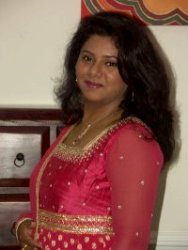 Nina Dash
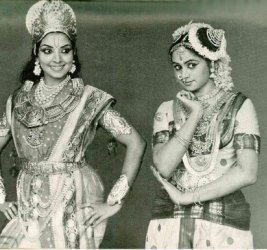 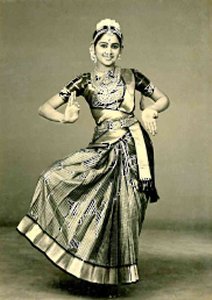 During my recent visits to USA, there were many occasions to acquaint myself with the local dancers who have settled in various cities across America. I came to know of Supriya Desai's commendable work when I visited Bangalore and also during previous two weeks before the conference, when I visited Raleigh again to attend their annual show. The high level of proficiency her students have obtained is commendable. She believes in strict adherence to the tradition and trains them well. Her daughter Karishma Desai is on her way to turn into a professional dancer, with a role model like Mythili Prakash. It was an excellent idea to present Mythili in 'an evening of Bharatanatyam' which was received with great appreciation. The morning session was devoted to seminar, touching upon the various aspects of how Indian Diaspora dancers are facing various challenges with the changing times. It was also interesting to bring to notice of the multi-cultural society, the changes taking place in Indian dance in India. Dr. Naima Prevots spoke about how during the decades of 60s and 70s Indian dance was received in America, then in the next two decades how with second wave of Indian immigrants things had changed, the acceptance of what she termed as 'cultural specific dances,' the growth of funding agencies including National Endowment Fund and high level of training, which contributed to an atmosphere where it was possible to take stock of how Indian dances were developing in America. I screened excerpts of Chandralekha's 'Sharira,' Daksha Sheth's 'Bhukhamb,' Priti Patel's 'Agni', Aditi Mangaldas's 'Footprints on water,' and also Rajika Puri's recent work 'Tapasya' to suggest how Indian dances were tackling different themes and movement languages, and other related issues. These works are not seen here and give some glimpses into how dance scene is changing in India. Dr. Purnima Shah in her concluding remarks emphasized that it was most important to have a thorough grounding in classical dance forms before taking recourse to changes and attempting 'to reflect contemporary realities.' The afternoon session was devoted to lecture demonstrations on Kathak and Andhra Natyam by Hasita Oza and Kavitha Konda respectively. Both in terms of explanations and demonstration, they were communicative and evoked interest in the dance forms. Whereas Hasita is a seasoned dancer with years of experience, Kavitha Konda's presentation of Andhra Natyam was perhaps seen for the first time by the local Indian Diaspora community and non-Indian American dance community. I was quite intrigued to learn that Nataraja Ramakrishna's principal disciple Kala Krishna was in Raleigh for nearly two months and he was not presented in a performance as well as a lecture demonstration of Navajanardhana Parijatam, of which he is an excellent exponent in stree vesham. Later on when I met Dr. Leela Prasad, Associate Professor in Religious Studies Department, at Duke University with Dr. Purnima Shah, I suggested that it would be of immense interest to different faculties to come together and arrange lec-dems at the University. Guru Kelucharan Mohapatra's daughter-in-law Sujata Mohapatra will be conducting workshop at Pani School of Dance, and Nina Dash and Purnima Shah have planned a presentation of her Odissi dance for the academic community at the Duke University. 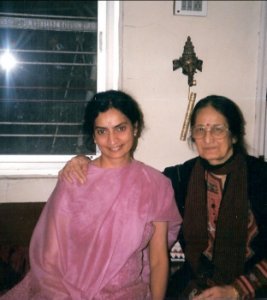 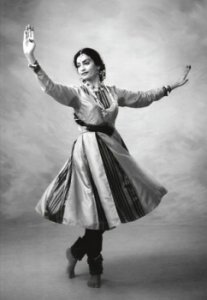 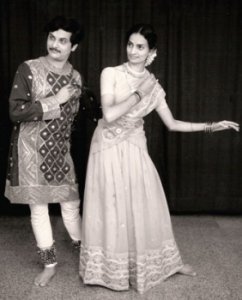 Hasita articulated problems of training to young generation which is far removed form Indian environment and has different educational program. But it was interesting to see how she has worked out strategies of using simple love songs for abhinaya, and for what Birju Maharaj has developed as 'ginati' counting to master tala and rhythm, encouraging the young ones to compose their own limericks patterning them on ginati, counting one, two, three, four, five and so on. At an impromptu get-together later on during the week at Hasita's residence, the children demonstrated various nritta numbers of Kathak, which convinced me that late Rohini Bhate, if she were to see it, would have approved of it. The sound training that Hasita has received under Rohini Bhate at Pune now pays her ample dividends. I was very impressed seeing her intelligent training methodology. Her own brief performance had the charm of Rohini's gharana, complete with couplets Rohini used to preface before the abhinaya song. Naturally, all agreed that the Sahitya plays important part in abhinaya and maturity comes only after a certain age and understanding. The young students of Hasita did her proud. For many in the audience, Andhra Natyam was a new experience. Kuchipudi patra pravesham by Kavitha Konda's disciple Niharika Nandan was enticing as were the excerpts from Navajanardhana Parijatam. The DVD screening showing various stages of development of Andhra Natyam was very educative and showed some of the Kalavantulu devadasi dancers. I think the dance community at this three city belt would benefit a lot by many more such dance demonstrations. I was asked to explain more about Andhra Natyam. I observed that since independence, the Indian states were formed on language basis, Andhra state came into being (Telugu language) whereas formerly it was a part of Madras Presidency. The most dominant form being Bharatanatyam, and the devadasi performers of Andhra Natyam, Kalavantulus, also performed abhinaya on the lines of what was being performed in Tanjore and elsewhere; they all shared the same tradition, the nomenclature Andhra Natyam, to distinguish it from Bharatanatyam, became an obsession with the practitioners in Andhra and Dr. Nataraja Ramakrishna developed it in its many ramifications including Perini dance form and so on. Of course the regional variations are there, but to call it Andhra Natyam created many problems. Swapnasundari has evolved what is now known as Vilasini Natyam which shares so many things common as seen in Andhra Natyam. It has now come to stay with the passage of time and accepted as a distinct form. The more one gets an opportunity to see the variations, the rasikas, the connoisseurs will relish these variations more. 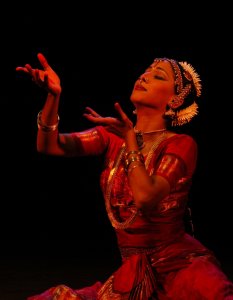 Mythili Prakash The meetings with students and parents of Supriya Desai's institute during one evening at her studio, after a similar meeting at Hasita's place, gave me an idea of the deep interest the parents are taking in their daughters' training in dance. Supriya has over the years with complete support from her husband Surendra Desai, who is at present the President of Indian Classical Music and Dance organization, created a niche for herself. For more than 15 years she has been choreographing, performing, training and winning laurels, both in the United States, where she is working and also in Karnataka in India. I enjoyed, in particular, a tillana composition for its perfection and visual geometry. Three dancers Karishma Desai, Kesha Acharya and Ritika Patil, formed interesting patterns and symmetry moving from side to side without overlapping. I also remembered during her school annual show, her younger daughter Rithyma's attempt at choreographing a number in which she incorporated movements of other dances, involving her peer group dancers. 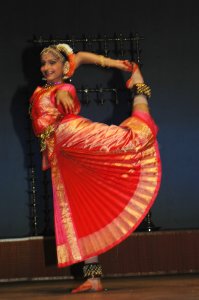 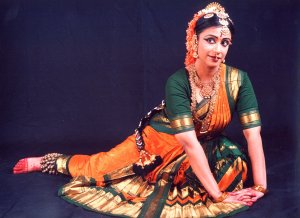 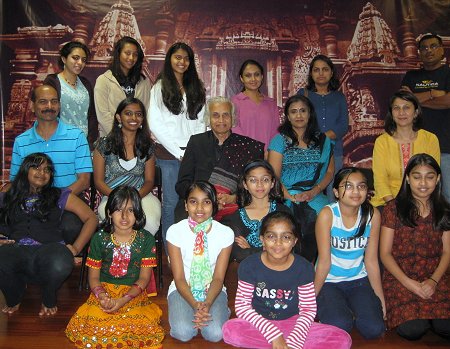 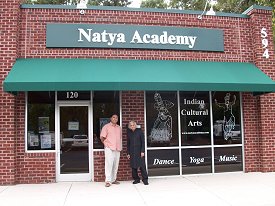 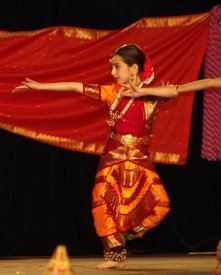 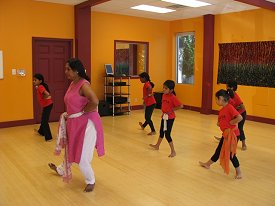
The day I arrived at Raleigh, both Dr. Naima Prevots and I were whisked off to Natya Academy, where so many artists had gathered, like what I had seen in the morning in New York. Like New York dancers have planned their website and networking, I suggested to the dancers at Raleigh to come together and make the scene vibrant, dissolving differences and working as a team. We had a whale of a time, talking, discussing, singing and celebrating during the reception, on the previous evening of the Conference. The group photo taken on this occasion will be a good documentary evidence for the dancers in years to come. The local dancers, dance teachers now 'have come of age' and are well established. Therefore all such initiatives are bound to create healthy competition and it would be good for the horizontal growth of Indian classical dance forms. The India festival in Raleigh where more than 8,000 people gather, the showcasing of Indian classical dances has created a demand for Indian classical dance. Today the dancers have come out of their home and 'basement syndrome' of teaching dance and it augurs well for all interested in dance.  Dr. Sunil Kothari, dance historian, scholar, author, is a renowned dance critic, having written for The Times of India group of publications for more than 40 years. He is a regular contributor to Dance Magazine, New York. Dr. Kothari is a globetrotter, attending several national, international dance conferences and dance festivals. He has to his credit more than 14 definitive works on Indian classical dance forms. Kothari was a Fulbright Professor and has taught at the Dance Department, New York University; has lectured at several Universities in USA, UK, France, Australia, Indonesia and Japan. He has been Vice President of World Dance Alliance Asia Pacific (2000-2008) and is Vice President of World Dance Alliance Asia Pacific India chapter, based in New Delhi. A regular contributor to narthaki.com, Dr Kothari is honored by the President of India with the civil honor of Padma Shri and Sangeet Natak Akademi award. He recently received the Senior Critic award from Dance Critics Association, NYC. |